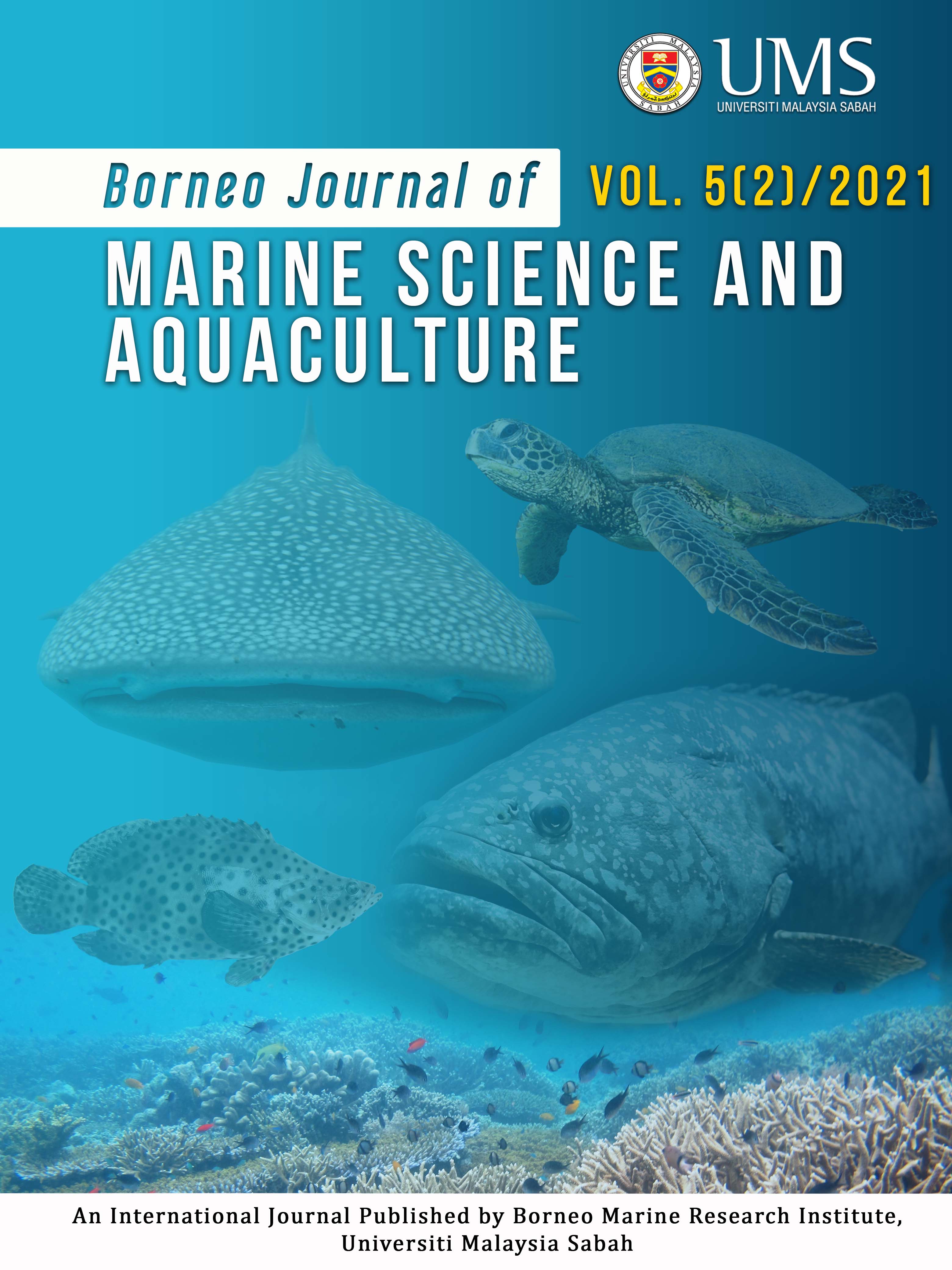Integrating sentinel-2 spectral-imagery and field data of seagrass coverage with species identification in the coastal of Riau Islands, Indonesia
DOI:
https://doi.org/10.51200/bjomsa.v5i2.2710Keywords:
Depth Invariant Index, Remote Sensing, Riau Islands, Seagrass, Sentinel-2Abstract
Seagrass plays an important role in marine ecosystem. Plans for sustainable management of marine ecosystem should give due attention to this marine critical habitat. One effort to monitoring the long-term management of seagrass is to use spatial data using remote sensing techniques. Satellite imagery offers an efficient and cost-effective means of estimating water conditions in shallow environments. This study aims to map the coverage of the seagrass meadows using satellite images spatially, determine the species composition of the seagrass meadows, and examine the accuracy level from the results obtained by the Sentinel-2 images. Investigations reported here were conducted in the Riau Islands (4 Stations at Lingga Island and 2 Stations at Singkep Island) in Indonesia from 3 - 7 October 2020. The satellite image data used Sentinel-2 at the acquisition year of 2019 based on the method of Depth Invariant Index (DII) with Support Vector Machine (SVM) classification. The in situ observations were made from 6 October 2020, same with the validation date, to verify the data obtained through satellite imagery. This was needed for calculating the accuracy of results based on seagrass images and identifying the species using the Seagrass-Watch (Transect Quadrant). The result showed that the seagrass in the Riau Islands can be detected with the DII method with seagrass coverage area of 175 km2 from the satellite in Lingga and Singkep Island. Percentage of Seagrass coverage for all transects was estimated to be about 78%. The seagrasses species identified were: Halophila ovalis, Halophila minor, Thalassia hemprichii, and the dominant species was Enhalus acoroides.
References
Congalton, R. G., & Green, K. (2009). Assesing The Accuracy of Remotely Sensed Data : Principles and Practices. New York: Lewis Publisher.
Green, P. E., Mumby, A. J., and Edwards, C. D. (2000). Remote Sensing Handbook for Coastal Management. Paris: United Nations Educational, Scientifics and Cultural Organization.
Hemminga, M. A., & Duarte, C. (2000). Seagrass Ecology. Cambridge: Cambridge University Press.
Komatsu, T. T., Sagawa, A., Mohri, H., Ben, M., Fukuda, M., Lanuru, M. I., Belsher, T. (2008). Utilization of ALOS Data for Mapping Coastal Habitat: Examples of Seagrass Beds From Boreal to Tropical Waters. The 2008 Joint PI Symposium of the ALOS Data Nodes, 31.
Kuriandewa, T. E. (2005). Seagrass Mapping in East Bintan Coastal Area, Riau Islands, Indonesia. Coastal Marine Science, 154-161.
Lyzenga, D. R. (1981). Passive Remote Sensing Techniques for Mapping Water Depth and Bottom Features. Applied Optics, 379-383.
Mannuputy, A. (2016). Seagrass Mapping Based on Satellite Image Worldview-2 by using Depth Invariant Index Method. IPB Journal, 168-175.
McKenzie, L. J. (2004). Guidelines for the Rapid Assessment of Seagrass Habitats in The Western Pasific. Quenensland: Department of Primary Industries, National Fisheries Centre.
Tamondong, A. M., Blanco, A. C., Fortes, M. D., & Nadaoka, K. (2013). Mapping of seagrass and other benthic habitats in Bolinao, Pangasinan using Worldview-2 satellite image. IEEE International Geoscience and Remote Sensing Symposium - IGARSS, 1579-1582.






